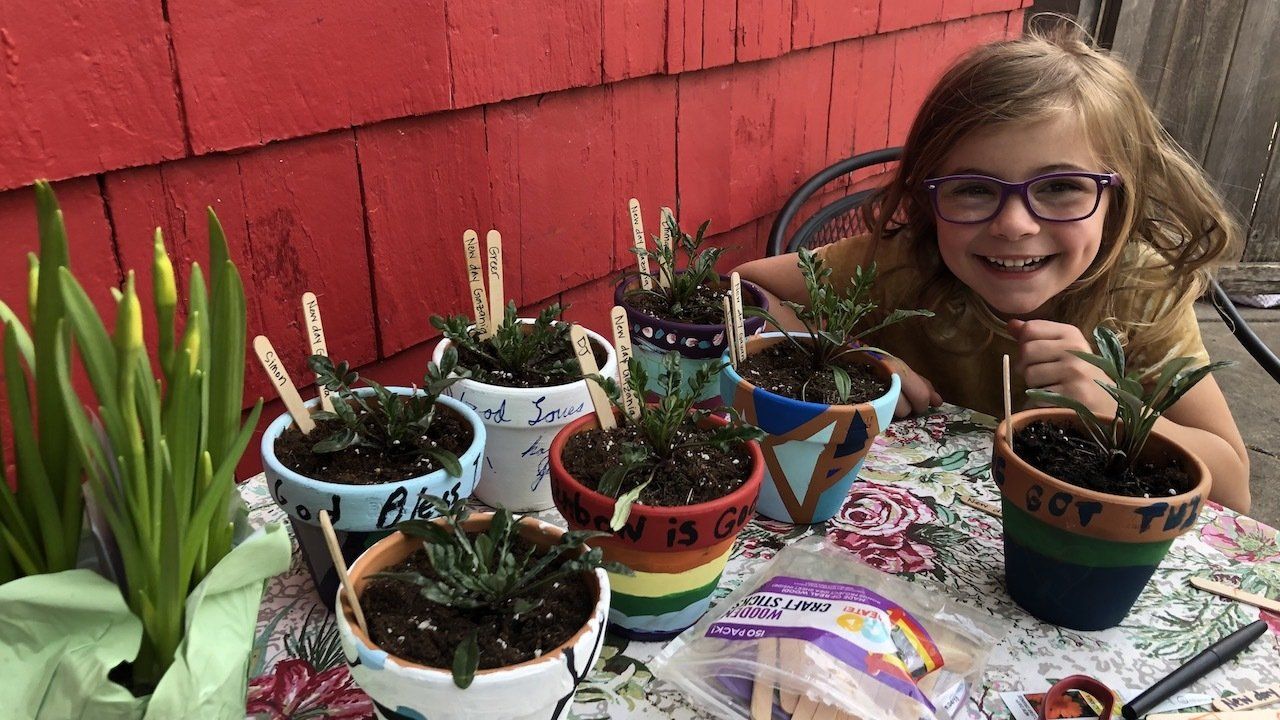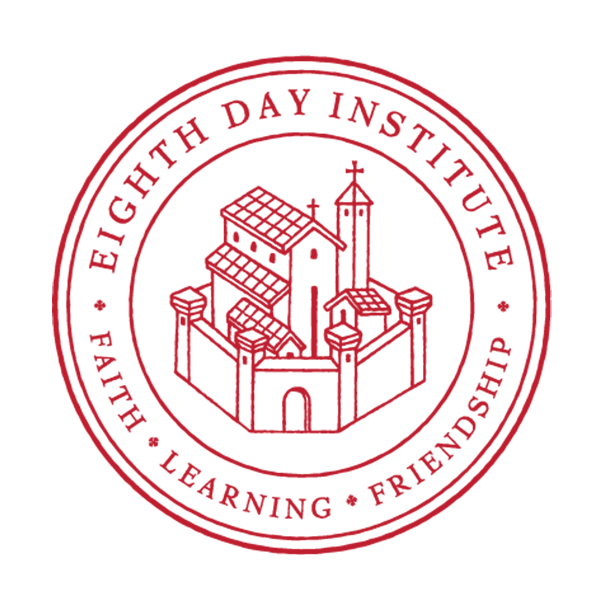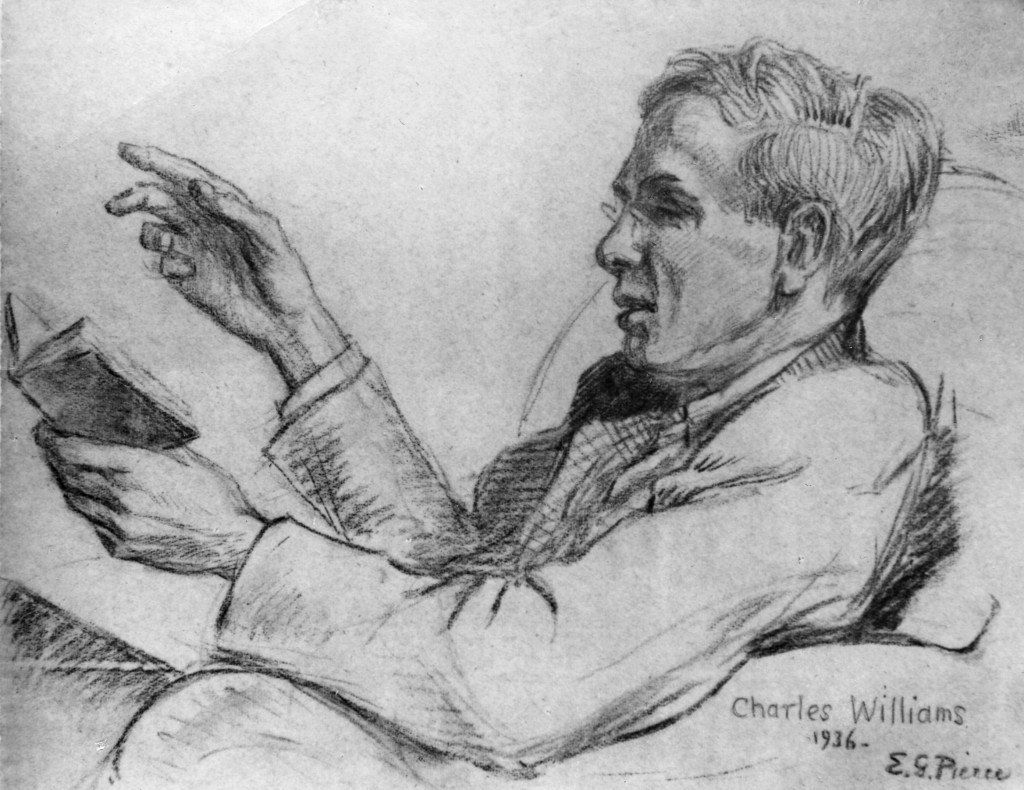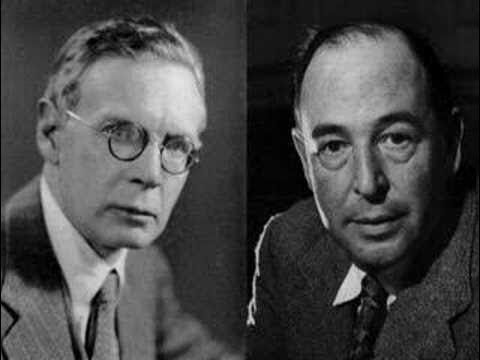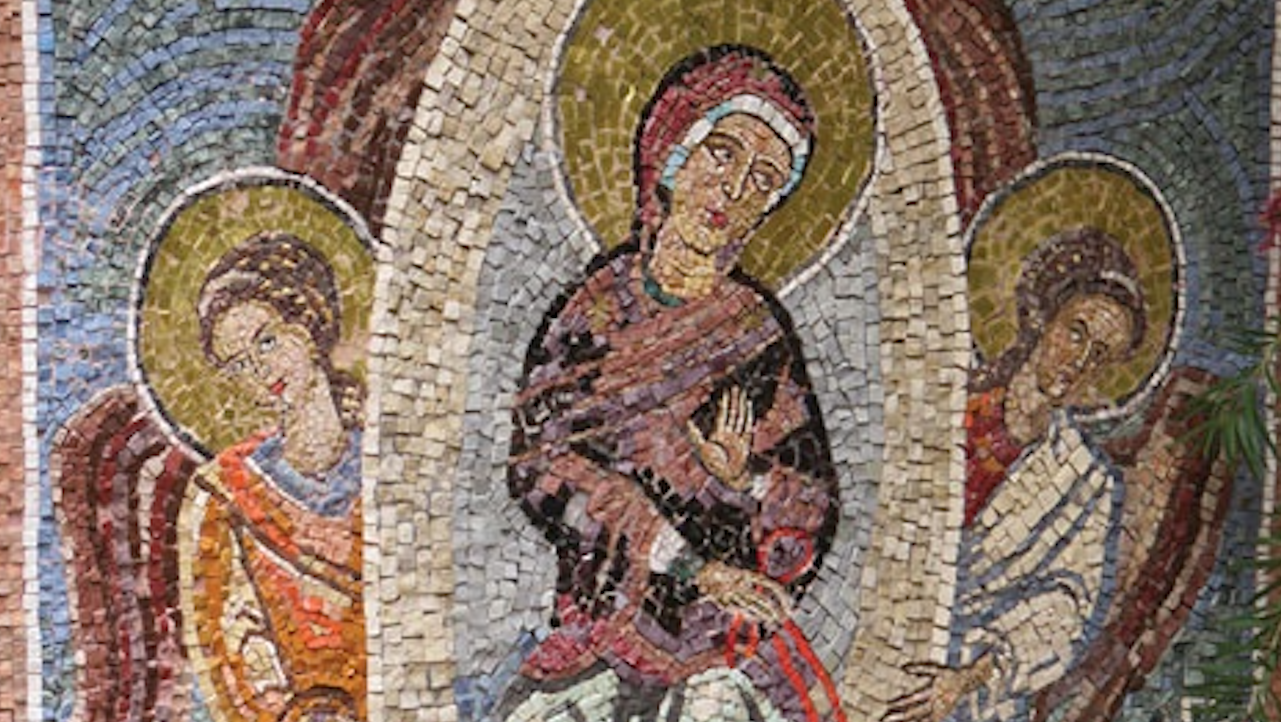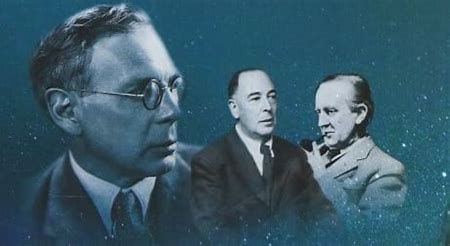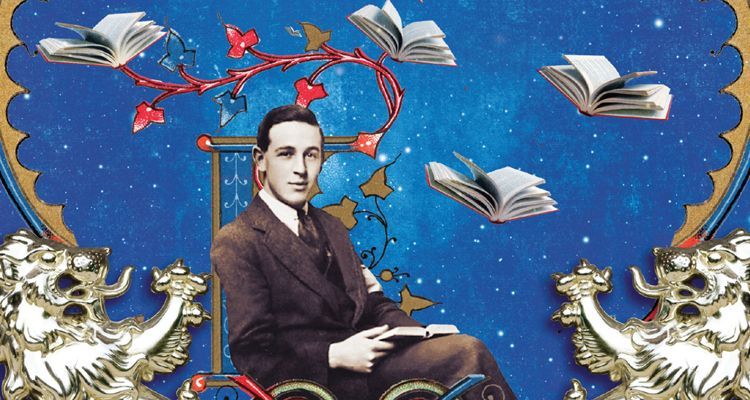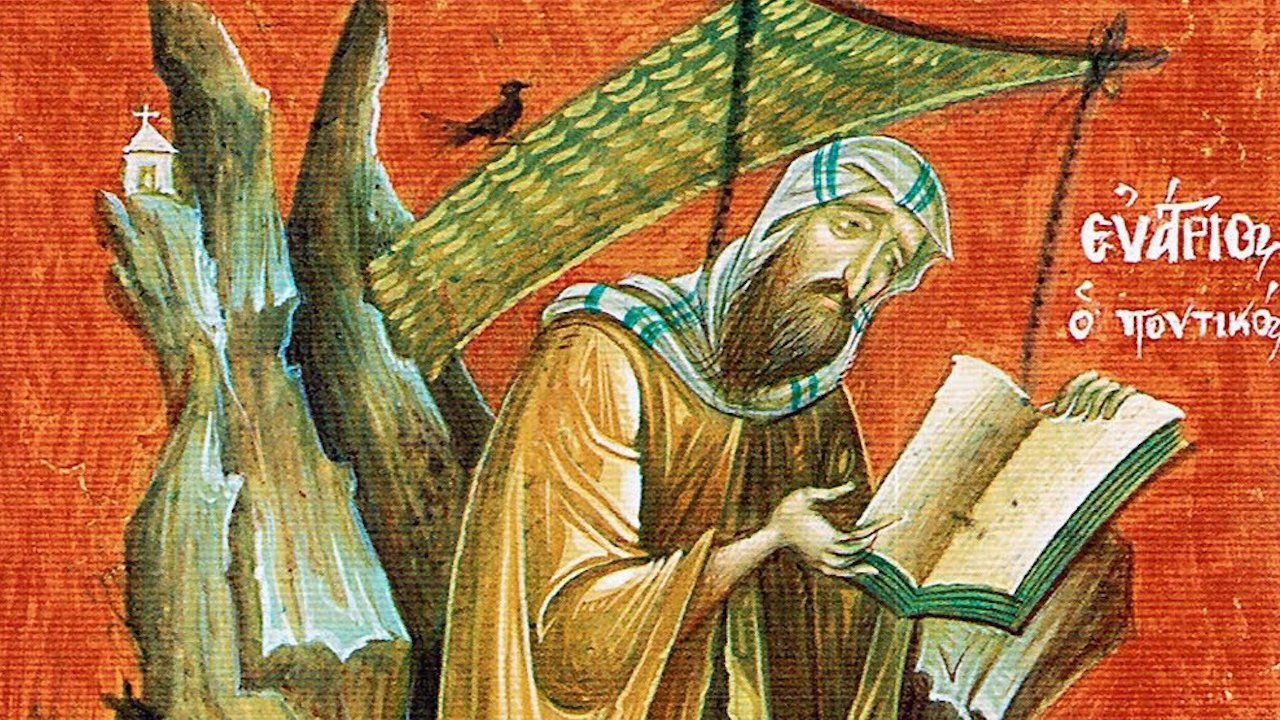Esther Ruth Doom preparing May Day flowers
Christ is risen! Truly He is risen!
And happy May Day. Did you distribute any May Baskets? My children delivered May Day flowers to neighbors and friends.
Speaking of May, today kicks off our spring/summer fundraising campaign. The goal is to raise $15,000 by the end of the month (thanks to 17 of you, we’ve already received over $1,000). You’ll be hearing from the Board of Directors over the next couple of weeks, but in the meantime,
consider offering a generous donation today. Next Friday, all donors will receive the Florovsky-Newman Week Seminar notebook on “Hope in the Age of Anxiety” (includes readings from the Bible, the Fathers, the Liturgy, & Literature); and you’ll be given “virtual” access to the seminar and the annual Florovsky & Newman Lectures on June 5-6.
1. Essays et al: "Sacraments, Deification, & Holy Relics" by Fr. Sergius Bulgakov
the veneration of holy relics is most ultimately connected with the fundamental dogma of Christianity – with divine Incarnation for the sake of our salvation. The deification of man, Christian human-divinity (if it is permissible to use this phrase), is the basis of the veneration of the saints, as well as of their bodily remains, holy relics.
Later in the essay, he describes the impact of Pentecost:
After the descent of the Holy Spirit, grace ceaselessly flows into the world, and the world becomes a receptacle of divine powers. This outpouring of powers is accomplished by means of holiness, which itself is produced by this outpouring; in the divine liturgy, in sacraments, it nourishes, warms, and preserves the world and man. All sacraments in the strict sense, and also all holy acts that are usually not called sacraments, represent a ceaseless bringing-down of this power into man.
Bulgakov concludes:
in the gracious life of the Church, all that is spiritual is corporeal; all that is divine has flesh, is human, for man is man-god – all that is spiritual is material, is clothed in a body. Therefore, we perform all the sacraments having at our disposal a certain material of the sacrament – bread and wine, oil, myrhh, water, and, in the extreme case, word and touch. Therefore, we “sanctify” or “bless” water, icons, temples, and so on; and that, in general, is why we have holy things, holy places and objects. And that is also why we venerate holy relics.
To find suspect or to reject the veneration of holy relics on the basis of considerations of false spiritualism, i.e., to separate the relics from their possessors or bearers, is to reject both the humanity of the saints and one’s own humanity. If the saints are holy, then their remains – their relics – are holy too; and these remains must be reverently preserved and venerated; in them and through them we address the glorified saints; by kissing them, we show our love for these saints.
2. Essays et al: “Material Religion: The Christian Veneration of Matter” by Erin Doom
Another passage from Bulgakov’s essay reminded me of something I wrote several years ago. First, Bulgakov:
In man and through man circulate constantly and continuously all the powers of the universe, of which he is the center; in him, for him, and through him, the world is created, and all of his actions are not only spiritual movements, but also cosmic actions. He is capable of turning to God from the world, but God, who created him, does not take him out of the world, but only fills him with His power. This ontological essence of man contains the reason why, in the divine liturgy, in the mysterious side of the Church, there is manifested that which is called – at times with censure, and at times defiantly – religious materialism.
My piece opens with the same assertion: Christianity is a material religion. This is apparent in scripture and in the Fathers. And it was affirmed at the Ecumenical Councils.
This is most strikingly seen in the Seventh Ecumenical Council’s (787 A.D.) defense of icons, relying heavily on St. John of Damascus. The Damascene monk affirms his reverence and respect for matter as “that through which my salvation came, because it is filled with divine energy and grace.” He goes on to note the materiality of the instruments of our salvation and deification: "the thrice-precious and thrice-blessed wood of the cross . . . the holy and august mountain, the place of the skull . . . the life-giving and life-bearing rock, the holy tomb, the source of the resurrection . . . the ink and the all-holy book of the Gospels . . . the life-bearing table, which offers to us the bread of life . . . the gold and silver matter, out of which crosses and tablets and bowls are fashioned . . . the body and blood of my Lord."
The rest of my essay explores the way the Church’s hymnography for the Feasts of the Nativity and Theophany are “saturated with poetic affirmations of the material world.”
3. Essays et al: “In a Grave for Three Years” by Little City Hermit
Since I opened with a piece on relics and since we are celebrating the resurrection during this Eastertide, today's third essay offers a fascinating perspective on death. Orthodox Christian monks on Mt. Athos have their own unique traditions for burial. According to “Little City Hermit,”
burial takes place on Mount Athos on the day of death and without a coffin, so that the body may return unto the ground as soon as possible. Such a burial practice is actually common in many religions and cultures. In particular, Abrahamic religions adhere to this rule in accordance with the words that God addressed to Adam before his exile from Paradise: In the sweat of thy face shalt thou eat bread, till thou return unto the ground; for out of it wast thou taken: for dust thou art, and unto dust shalt thou return (Gen. 3:19).
After the customary prayer rule is read, the deceased monk is carried by his fellow brethren to his place of rest and is buried. Afterwards, on top of the grave the brethren mount a low four-pointed wooden cross on which, using simple paint, is made the most concise inscription: the name of the monk and the date of his death.
Now for the really interesting custom:
After three years have passed, the grave of the newly-reposed monk is carefully dug up and the brethren now examine the remains of the deceased to see what state they are in. If the soft tissues of the body are not completely decomposed yet, the grave will be covered up in likewise manner and the following procedure will be repeated again until it is clear that only the bones remain […]
If the bones of the deceased are completely free from flesh (and this, under the Athos climate, while also taking into account the terrain, occurs most often in just about three years), they are taken out of the grave, and after being thoroughly washed with water and wine are transferred to the ossuary, which is a building that resembles a chapel and is usually located somewhere nearby, outside the walls of the monastery. As for the empty grave, it’s now ready to grant rest for another three years to someone else after his repose.
The rest of the story is even more fascinating:
an ossuary is, in essence, a crypt. But the peculiarity of this crypt lies in the fact that the deceased, or rather, their remains, are not hidden there, but are in plain sight: the skulls are lined up in rows along the shelves, while the other bones are neatly laid right on the floor along the walls. The names of the monks and the date of their death are usually found written on each skull. Here is how the well-known Russian writer Boris Zaitsev, who visited Mount Athos at the beginning of the 20th century, described the ossuary of the Skete of Saint Andrew: “The ossuary of St. Andrew’s Skete is a rather large, secluded and well-lit room on an underground floor. Inside the ossuary is found a cupboard with five human skulls. On each is inscribed a name and a date. These were the abbots of the skete. Then on the shelves lay the skulls (about seven hundred) of ordinary monks, which also have inscriptions. And, finally, what to me seemed most incredible—small bones (the hands and feet) were neatly put together in stacks near the wall, reaching up almost to the ceiling. All this was done with the most profound care that is inherent to this kind of burial tradition. It seemed to me that the only thing missing from this whole picture was a monk that would spend time here keeping record of things and compiling biographies of the reposed brethren. There is some literature present here as well. On the wall here, by the way, hangs a saying that the brethren themselves composed: “Remember, O brethren, that we were once like you, and you will once become like us.” […]
Mt. Athos’ ossuaries are never locked. Any inhabitant of the monastery can at any time can enter the ossuary and in solitude reflect on the transience of life. Looking at the bones of monks whom one once knew, or of those who had reposed centuries ago, it is unlikely that one would not come to the thought that they themselves will one day also find rest here along with their fellow brethren. Now that is truly something to ponder for the monk… However, monks do not at all fear ending up here in this gloomy house of bones, knowing for certain that there is no need to fear death, for it has already been defeated by the Risen Christ!
Indeed, there is no need to fear death because Christ is risen from the dead, trampling down death by death and upon those in the tombs bestowing life!
4. Books: Bodies like Bright Stars: Saints and Relics in Orthodox Russia
by Robert H. Greene
5. Poetry: “Broken Body Prayer” by Scott Cairns
I am of the body, of your most
belovéd body, then I am sorely
severed – both meet and right that I should be
cut off from your otherwise immaculate,
your otherwise praiseworthy, your most pure
and comely body. If ever I may
have partaken of your endless life as you
once partook of this my own patent
death, that vivid pulse has since been quieted
to little beyond an inexpressive
ache, and I will take that untoward dimming
to suggest a late, most acute parting
from the lifeblood coursing through everything
that lives and moves, every other thing as well.
I am broken, am most broken. Remember me.
*Published in Anaphora: New Poems (Paraclete Press, 2019), p. 75. Available at Eighth Day Books.
6. Bible:
Acts 5:1-11; and John 5:30-47; 6:1-1.
Online here.
7. Liturgy: Evlogitaria for the Dead
Blessed art Thou, O Lord; teach me Thy statutes. The Choir of the Saints hast found the Fountain of Life, and the Door of Paradise. May I also find the way through repentance: the sheep that was lost am I; call me up to Thee, O Savior, and save me.
Blessed art Thou, O Lord; teach me Thy statutes. Thou Who of old didst fashion me out of nothingness, and with Thy Image divine didst honor me; but because of transgression of Thy commandments didst return me again to the earth where I was taken; lead me back to be refashioned into that ancient beauty of Thy Likeness.
Blessed art Thou, O Lord; teach me Thy statutes. Image am I of Thy unutterable glory, though I bear the scars of my stumblings. Have compassion on me, the work of Thy hands, O Sovereign Lord, and cleanse me through Thy loving-kindness; and the homeland of my heart's desire bestow on me by making me a citizen of Paradise.
Blessed art Thou, O Lord; teach me Thy statutes. Give rest, O God, unto Thy servant, and appoint for him (her) a place in Paradise; where the choirs of the Saints, O Lord, and the just will shine forth like stars; to Thy servant that is sleeping now do Thou givest rest, overlooking all his (her) offenses.
Glory to the Father and to the Son and to the Holy Spirit.
The Triune Radiance of One Godhead with reverent song acclaiming let us cry; Holy art Thou, O Eternal Father, and Son also Eternal, and Spirit Divine; shine with Thy light on us who with faith adore Thee; and from the fire eternal rescue us.
Both now and ever and to the ages of ages. Amen.
Hail, O Gracious Lady, that in the flesh bears God for salvation of all; and through whom the human race has found salvation: through thee may we find Paradise, Theotokos, our Lady pure and blessed.
Alleluia, Alleluia, Alleluia; Glory to You, O God.
With the Saints give rest, O Christ, to the soul of Thy servant where there is not pain, nor any sorrow, nor any sighing, but Life everlasting.
*Evlogitaria: “blessed” in Greek; troparia (theological hymns) sung after the reading from the Psalter; the refrain repeated between the troparia is “Blessed art Thou, O Lord, teach me Thy statutes” (Ps. 118:12, LXX).
8. Word from the Fathers: "Christian Fearlessness of Death" by St Peter Chrysologus
In the spirit of Eastertide and affirming the Athonite monks who do not fear their destination in the “gloomy house of bones,” today’s Word from the Fathers is a homily on fearlessness, based on the Gospel according to St. Luke 12:4-6. Here’s the opening of St. Peter Chrysologus’s sermon:
Brethren, you have heard how Christ, in an address worthy of a king, urges His soldiers to despise death and to have no fear of those who kill the body. Thereupon He bestows the rights of friends on those who, through their pursuit of this triumph and their love of liberty, have shed their blood with joy and intrepidity. His words are: “But I say to you, my friends: Do not be afraid of those who kill the body, and after that have nothing more that they can do. But I will show you whom you shall be afraid of; be afraid of him who, after he has killed, has power to cast into hell.”
“But I say to you, my friends: Do not be afraid” – because virtue proves liberty, and fear reveals slavery. A free man was born for glory, but the slave for fear. Therefore, the man who for God’s sake intrepidly spurns death and knows no fear is rightly raised to a friendship with God. If imitation of habits makes men friends, and similarity of habits keeps them together, rightly, then, does Christ call those His friends upon whom He gazes and foresees that in imitation of Himself they will tread under foot the javelins of the world and the very fear of death.
“But I say to you” – that is, not all men, but to my friends. “But I say unto you” – those whom that death does not exterminate, but sets free. “I say to you” – those whom the death of the body does not lead to torments, but promotes to something better. “I say to you” – for whom life is not ended by death, but begun. “I say to you” – whose death becomes precious not because of its nature, but for this reason: it is finding additional benefits of life, rather than losing its enjoyment.
Chrysologus next focuses on the subject of death and spends the rest of the sermon answering the objection, “Why did God allow His own work to perish through the activity of the Devil?”
Read the entire homily here.
**All books (and icons) in print available from Eighth Day Books.
Please support an independent bookstore that believes in the eighth day resurrection of our God and Lord and Savior Jesus Christ. Give them a call at 1.800.841.2541 or
visit their website here. And don’t forget Eighth Day Members (Patrons+) receive 10% discount, plus many other perks!
Learn more and become a member here.
